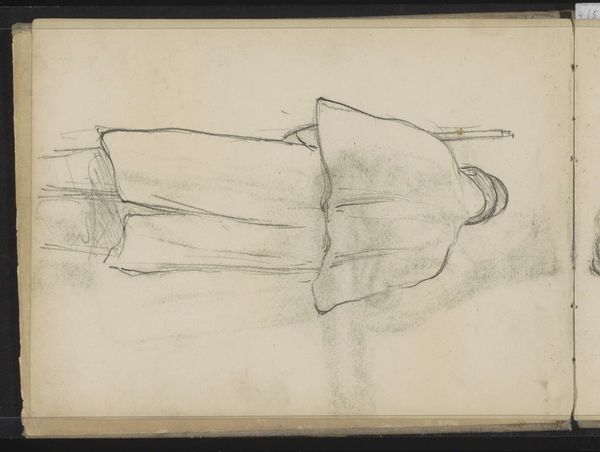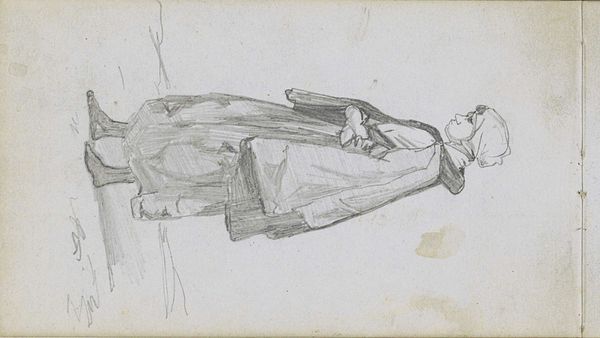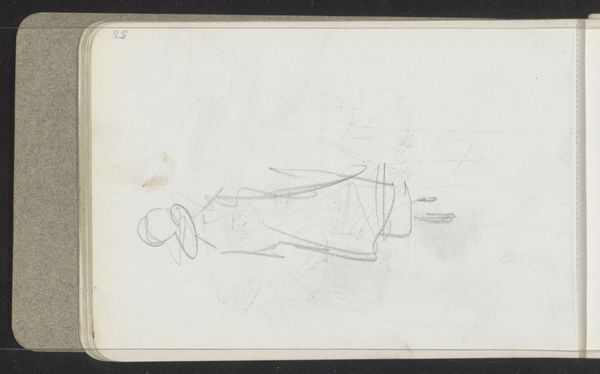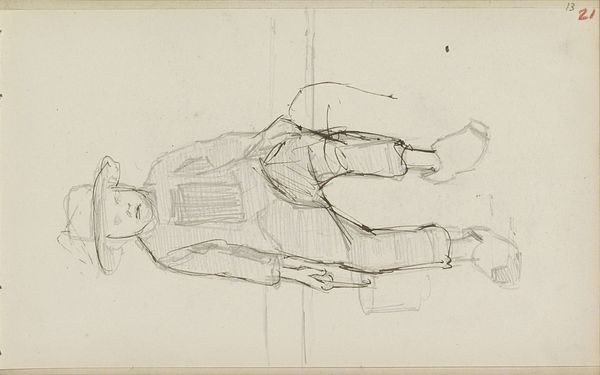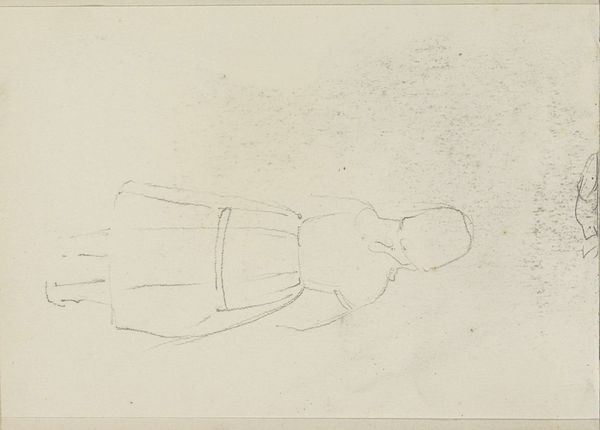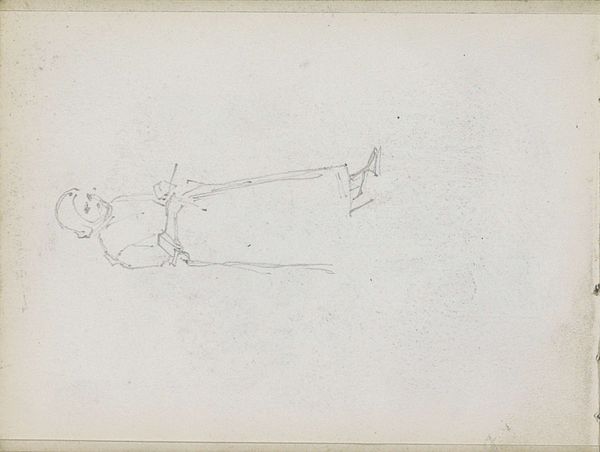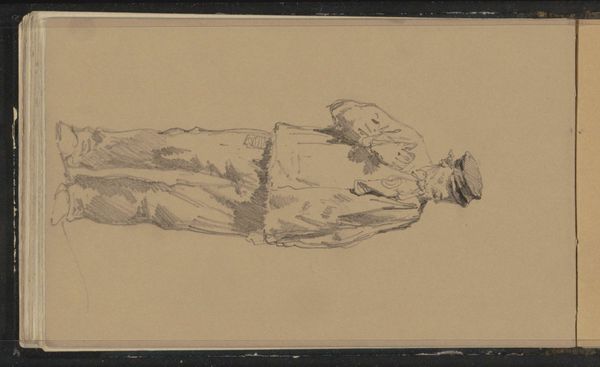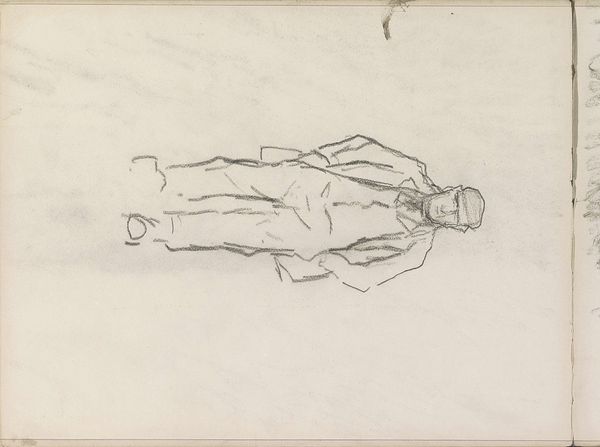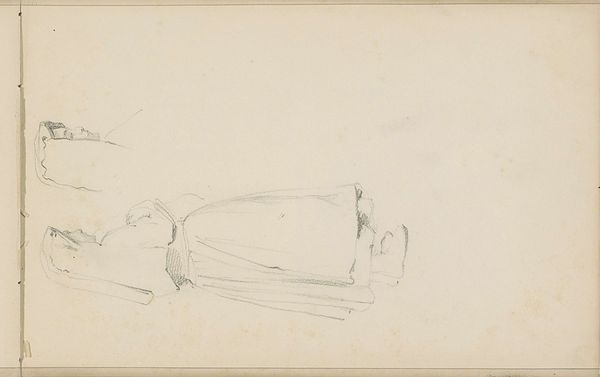
drawing, paper, pencil
#
portrait
#
drawing
#
amateur sketch
#
aged paper
#
toned paper
#
light pencil work
#
sketch book
#
incomplete sketchy
#
paper
#
personal sketchbook
#
detailed observational sketch
#
pencil
#
sketchbook drawing
#
genre-painting
#
sketchbook art
#
realism
Copyright: Rijks Museum: Open Domain
Curator: Here we have Anton Mauve's "Staand meisje met een hoofddoek en een lap over haar arm," which translates to "Standing Girl with a Headscarf and a Cloth over her Arm," dating from around 1848 to 1888. Editor: It has the charm of a quick sketch; the lines are delicate, almost tentative. There’s a gentleness in how the figure is rendered. It evokes a sense of intimacy, like a private moment captured. Curator: Precisely. Mauve was deeply involved in the Hague School, and what strikes me is how this drawing, though seemingly simple, reflects a broader interest in depicting everyday life and rural figures with a sense of realism and honesty. Editor: Looking at this from a modern perspective, it invites questions about representation. Who was this girl? What were her circumstances? The cloth she carries could be indicative of her role in society, perhaps as a servant or working-class woman. Curator: Indeed. The sketch format gives it an informal and unposed character. This wasn't commissioned work; rather, Mauve observed this young girl and, moved by a need for expression, chose to commit her visage to paper. This speaks volumes about Mauve's sensitivity towards people in his milieu. Editor: The aged paper enhances the historical context and makes you consider her reality—how class and gender shaped her experiences and opportunities. Did Mauve consider how this snapshot in time would impact perspectives towards working women like this girl? Curator: Art can offer insights into both intended and unintended societal norms or realities, revealing assumptions of artists and viewers. Editor: It is important to examine through contemporary discourse, because what at first feels charming, demands critical contemplation. Recognizing inequalities—how power influences representation—that impact present dialogues and identities, deepens appreciation of work that, in the past, might not receive equal consideration. Curator: A wonderful example of the way history gives definition and significance to simple representations. Editor: Ultimately this sketch prompts us to connect with this young woman across the chasm of time, acknowledging not just her image but also the societal forces shaping her world.
Comments
No comments
Be the first to comment and join the conversation on the ultimate creative platform.
